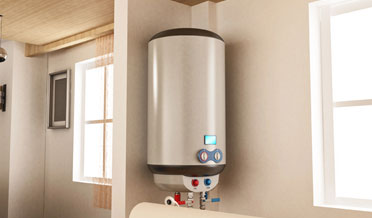Benefits of Tankless Hot Water Heaters: Efficiency & Savings
It is hard to overcome the status quo!
Some objects become so endemic, so ingrained in our lives and thinking, that we cease searching for new options or technologies. That is the case with tanked water heaters.
Having plenty of hot water on demand inside a home is so common that we expect it instead of appreciating it as a precious resource. We use hot water to bathe, clean dishes and clothes, and cook. The most common method of heating water is a tank; heating elements inside of a water heater tank warm approximately 40 to 50 gallons of water to about 1200 F.
The water is then stored until needed and hot water is delivered anywhere in the house on demand. The tank is insulated, but heat loss requires energy to reheat the water to a specified temp.
Storing the tank requires dedicated space, approximately thirty-six inches square and four to five feet high. Most homeowners can find their water heater with no problem since it takes up valuable space. If a homeowner thinks about replacing a water tank, they will probably start shopping to replace the existing tanked water heater with a similar model.
Today, homeowners have a second option, a tankless hot water heater. This small unit can be installed on a wall or under a vanity; a large tankless heater is approximately 26” x 14” x 10”. A unit this size can provide 8.4 gallons per minute, enough hot water to service a family of 4 or 5. A tankless unit heats water upon demand using either electricity or natural gas.
When the need for hot water ends the heating stops. This system uses less energy to heat and keep the water at the desired temperature. Large homes or homes with large families might use two tankless units to provide hot water immediately.
Pros and Cons of a Tanked Hot Water Heater
Pro—If a home is already plumbed, with the appropriate fuel, and adequate space (the status quo).
Pro—A tanked system provides hot water upon demand, with a large capacity.
Pro—The equipment for a tanked system costs less than a tankless system.
Con—It is necessary to keep 40 to 50 gallons of water hot for 24 hours for just a few minutes hot water is actually needed. This is not energy efficient.
Con—When hot water is depleted in a tank it takes 20 to 30 minutes to replenish the supply.
Pros and Cons of a Tankless Hot Water Heater
Pro—A Tankless Hot Water Heater does not take up floor space.
Pro—A Tankless system provides a virtually endless supply of hot water immediately.
Pro—A Tankless Hot Water Heater does not require significant plumbing alterations.
Pro—A Tankless Hot Water Heater requires less energy to complete a needed function. This reduces the cost of operating a water heater.
Con—The equipment for a tankless hot water system costs more than a tanked system.
If you are considering the purchase of a new water heater and need more information, gather the following information and consult with your plumbing professional.
- The amount of hot water needed in the home; the number of occupants in the home will help determine this figure.
- The equipment/installation cost for a new tanked water heater.
- The cost of energy for the heater—the cost of kWh of electricity or the cost of cubic meter for natural gas.
A plumbing professional can help determine the cost of both equipment/installation and the cost of operation.
Why Choose a Tankless Hot Water Heater? Let the Experts at Doctor Cool Help
Installing a tankless hot water heater offers several key benefits, starting with unlimited hot water on demand, so you never run out during showers or laundry. These systems are energy-efficient, heating water only when needed, which can lower your utility bills and reduce energy waste. Additionally, tankless units take up less space, making them ideal for smaller homes or areas where space is limited.
Doctor Cool has been helping homeowners with their hot water heating needs by installing state-of-the-art tankless hot water heaters. Call us today at 281-338-8751.
